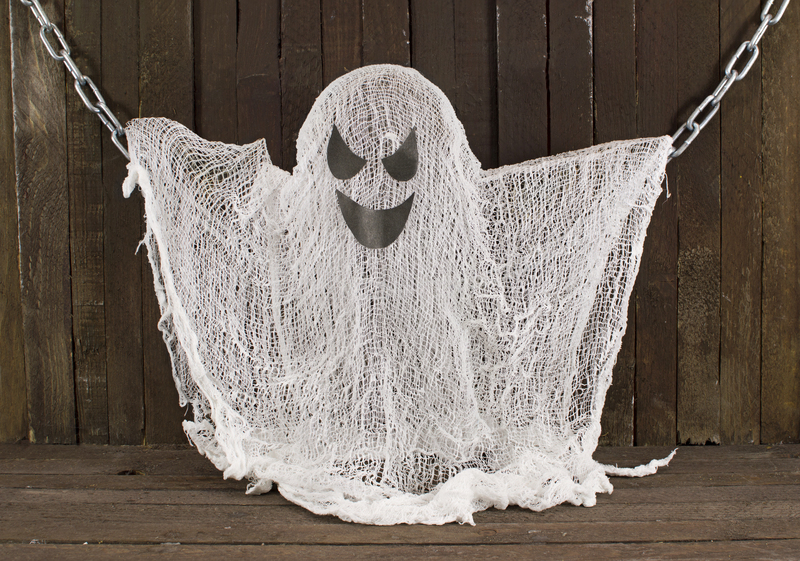Expert Guide: The Best Practices for Piano Moving
Posted on 27/06/2025

Pianos are extraordinary instruments--delicate, valuable, and yet impressively heavy. Moving a piano, whether it's an upright grand or baby grand, requires special care, knowledge, and preparation to avoid costly damage or injury. In this expert guide, we share the best practices for piano moving to safeguard your beloved instrument and ensure a smooth, stress-free relocation experience.
Why Is Piano Moving Unique?
Piano moves are nothing like relocating ordinary furniture. Pianos weigh anywhere from 300 to 1,200 pounds and contain thousands of tiny, sensitive parts, including strings, hammers, and pedals. Their size, shape, and weight distribution make them awkward to maneuver through doorways, stairs, and tight corners.
- Complex Shape: Bulky and oddly shaped, making maneuvering difficult.
- Weight Distribution: Heavy inner components vs. fragile exteriors means a risk of both internal and external damage.
- High Value: Monetary and sentimental value means extra care is essential.
- Delicate Inner Mechanisms: Sensitive to shock and environmental changes.
Because of these factors, following professional piano moving practices is crucial for preserving the condition, sound quality, and longevity of your piano.
Preparation and Planning for Piano Moving
1. Evaluate Your Piano
Begin by carefully assessing your piano model and its condition. Different types of pianos--such as upright, spinet, baby grand, or concert grand--require different piano moving techniques and equipment. Examine for existing damage, loose parts, or structural weaknesses that might influence the moving process.
2. Measure Everything
Use a measuring tape to record the dimensions of your piano. Then, measure all relevant doorways, hallways, staircases, and elevators along the path from its current location to the moving truck or new destination. Always double-check the clearance--this simple step can save a lot of time and trouble!
3. Assemble the Right Piano Moving Tools
Having the right equipment is a cornerstone of safe piano transportation. You'll need:
- Piano Dollies: Specifically designed to support piano weight during movement.
- Heavy-Duty Straps: For secure lifting and stabilization.
- Piano Boards (Skid Boards): Essential for grand pianos and stairs.
- Moving Blankets & Pads: To protect from scratches and dents.
- Ramp: For gentle loading over steps and into trucks.
- Work Gloves: To enhance grip and prevent hand injuries.
- Transport Dolly: Supports upright pianos on flat surfaces.
Tip: Never use regular household dollies or makeshift tools--they are not designed to handle a piano's unique needs.
4. Secure Your Team
No one should attempt moving a piano solo. Ideally, recruit at least three to five able-bodied people. Professional piano movers have specialized training; if you're not experienced, hiring pros can prevent accidents and mistakes.
Step-by-Step Best Practices for Moving a Piano
1. Prepare the Piano
- Lock the keyboard: Secure the lid to avoid injury to the keys during the move.
- Remove detachable parts: Take off music stands, pedals, and legs (if a grand or baby grand piano).
- Wrap the piano: Use thick blankets or moving pads secured with tape or straps. Do not use plastic wrap directly on wood surfaces as it can trap moisture and damage the finish.
2. Plan Your Route
Clear the path of obstacles, rugs, furniture, or debris. If moving through narrow spaces or downstairs, ensure you have enough hands on deck and practice dry runs if necessary.
3. Use Proper Lifting Techniques
- Lift with your legs, not your back: Bend at the knees and keep your back straight.
- Keep the piano upright: Never tip a piano more than absolutely necessary.
- Communicate: Count down or signal before moving to ensure everyone is ready and lifting at the same time.
- Distribute weight evenly: Assign stronger movers to heavier sides, particularly for grand pianos.
4. Navigate Stairs and Doorways
Always use a piano board secured with straps for grand pianos. Upright pianos can often be wheeled, but be ready to lift at uneven transitions. Take special care with stairs:
- Proceed slowly and steadily.
- Pivot carefully at corners; don't rush.
- Support the underside of the piano when climbing stairs to protect the fragile base.
5. Loading into the Moving Truck
- Use a sturdy ramp and ensure it is secure before rolling or sliding your piano.
- Position the piano against the back wall of the truck for the best stability during transit.
- Secure with heavy-duty straps so it cannot move or tip while driving.
- Surround with soft padding and avoid stacking boxes or heavy items on top or against the piano.
What to Do After Relocating Your Piano
1. Professional Tuning
The best practice after a piano move is to have it professionally tuned. Moving often knocks the delicate strings out of alignment, and a change in humidity or temperature can further affect tuning. Wait one to two weeks after moving before scheduling tuning to allow the instrument to acclimate.
2. Inspection
Check for any new damage, including scratches, dents, or compromised components. Inspect inner workings for loose parts, strange noises, or mechanical problems. *Address any issues with a piano technician immediately.*
3. Placement in Your New Home
- Keep away from windows and direct sunlight: UV rays and shifting temperatures harm finishes and wood.
- Avoid heating/cooling vents: Fluctuations in humidity and temperature can warp wood and disrupt tuning.
- Allow breathing room: Position the piano at least a foot from exterior walls.
Should You Move a Piano Yourself or Hire Professionals?
One of the most common questions is whether to attempt a DIY piano move or hire a professional piano moving service. Consider these factors:
Advantages of Professional Piano Movers
- Specialized training in safe lifting, handling, and piano assembly/disassembly.
- Insurance coverage in case of damage or injury.
- Access to professional-grade equipment.
- Experience navigating complex moves--stairs, doorways, tight angles, etc.
- Quicker, more efficient process with fewer risks.
When DIY May Be Appropriate
- Simple flat move (no stairs or tight spaces).
- Lightweight upright piano.
- Sufficient help and experience.
- Proper equipment is available.
Key advice: If you have any doubts, always consider hiring professional movers who specialize in pianos. The cost is minor compared to potential piano damage or personal injury.
Common Piano Moving Mistakes to Avoid
- Not measuring carefully: Underestimating the space needed can cause accidents or stuck instruments.
- Inadequate protection: Moving without blankets or pads leads to scratches, dents, or cracked finishes.
- Improper lifting: Lifting with your back, not using straps, or not keeping the piano upright can cause injury or damage.
- Rushing: Haste increases the risk of accidents and mistakes--take your time!
- Insecure loading: Not strapping down the piano in a vehicle invites disaster during transit.
- Ignoring climate factors: Pianos are sensitive to temperature and humidity. Sudden changes can damage internal components.
Piano Moving Insurance and Value Protection
Before relocating your piano, confirm whether your homeowner's policy or moving insurance covers musical instruments for transit damage. Many professional piano moving companies offer supplemental valuation protection in addition to any general liability insurance. Double-check all coverage and, for high-value instruments, consider purchasing additional coverage for peace of mind.
Eco-Friendly Piano Moving Tips
- Reuse moving blankets and packing materials wherever possible.
- Coordinate with local music schools or charities for piano donations if you're not keeping your instrument.
- Choose professional piano moving services that implement green practices.
Frequently Asked Questions About Piano Moving Best Practices
How much does it cost to move a piano?
Costs depend on the type and size of the piano, distance, complexity of the move, and whether stairs or tight spaces are involved. Local upright piano moves may start at $150-$300, while grand or concert pianos or long-distance moves can range from $500 to over $2,000.
Can I move a piano without professional help?
While it is possible for light upright pianos and short, flat distances, the risks are significant without the right tools, personnel, and expertise. For safety and instrument protection, professional moving is strongly recommended.
Will my piano need to be tuned after moving?
Yes. Environmental changes and jostling will almost always affect tuning. Wait a few weeks after moving before hiring a piano technician to retune.
What should I do with old or unwanted pianos?
Donate to schools, community centers, or music programs where possible. Some professional movers offer removal and eco-friendly disposal for pianos that cannot be restored.
Final Thoughts: Key Takeaways for Safe, Expert Piano Moving
Moving a piano is a serious undertaking--one that requires thorough preparation, attention to detail, and the right equipment. By following industry best practices for piano moving, you can protect your instrument (and those helping you) from unnecessary harm. Here's a quick summary of the essentials:
- Plan ahead: Measure, clear spaces, and assess both your route and your piano.
- Use the right equipment: Don't improvise--always use purpose-built moving tools.
- Work with a team: Never attempt piano moving alone.
- Secure the piano during transit: Proper wrapping and strapping are essential.
- Hire professionals for complex or risky moves: It's the safest investment you can make.
- Schedule post-move tuning and inspection: Preserve your piano's performance and structural integrity.
By understanding and applying these expert piano moving tips, you'll ensure your cherished instrument arrives in its new location in perfect condition, ready to fill your home with music once again!







